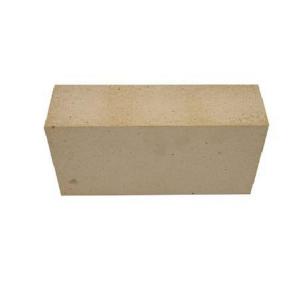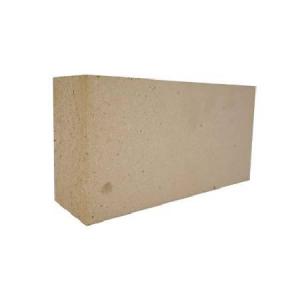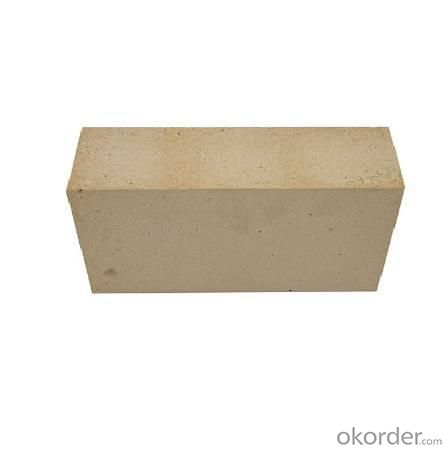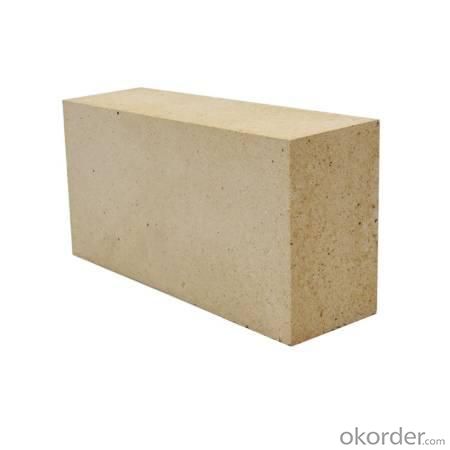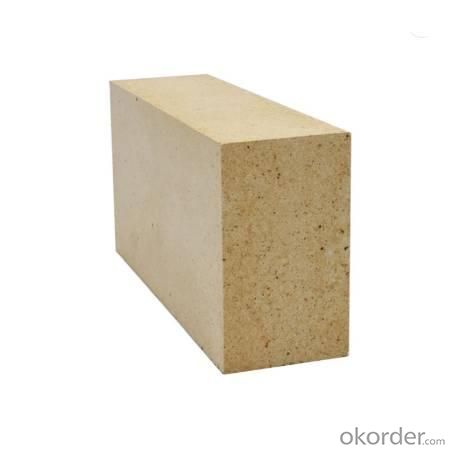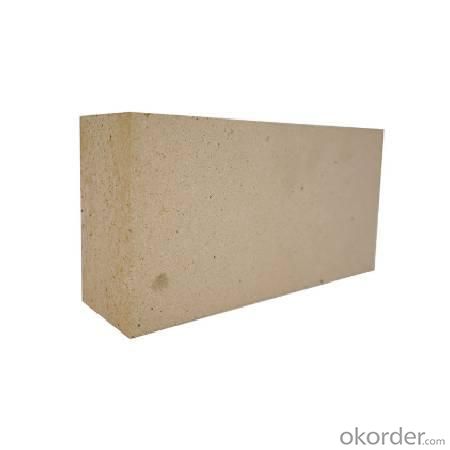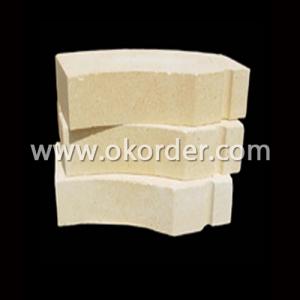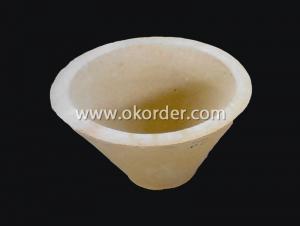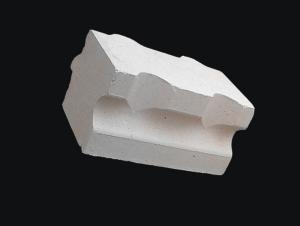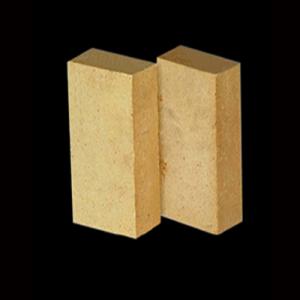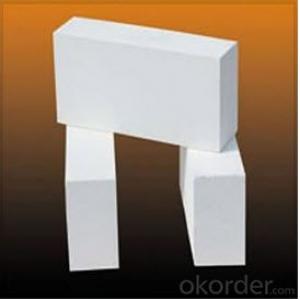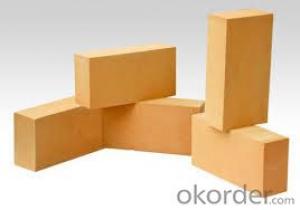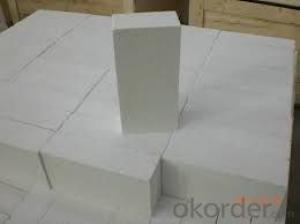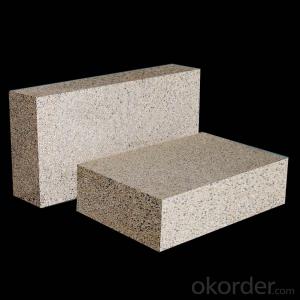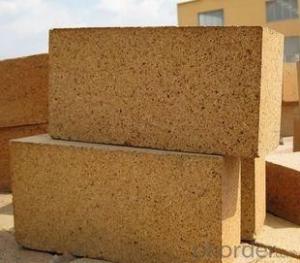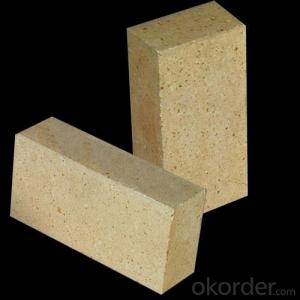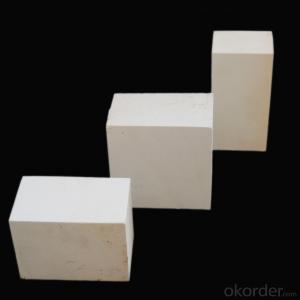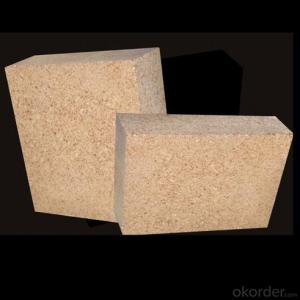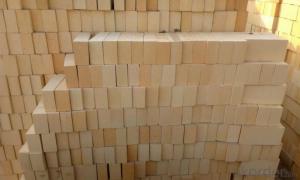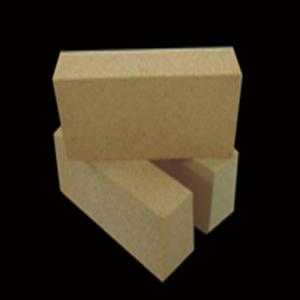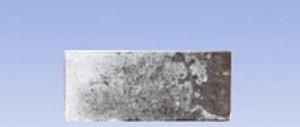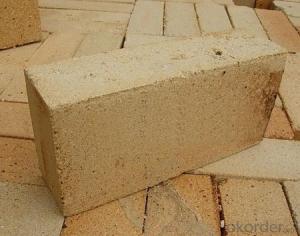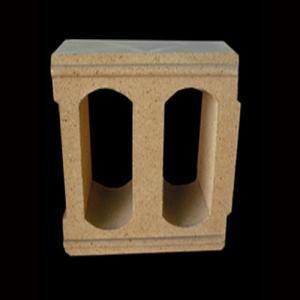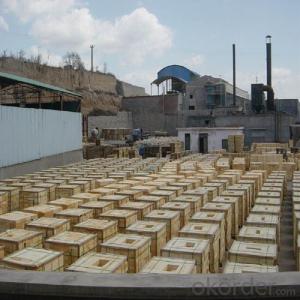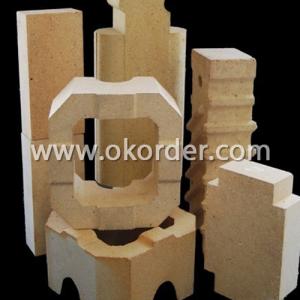High Alumina Brick - Curved Dense Line Fire Resistant for Blast Furnaces
- Loading Port:
- Tianjin
- Payment Terms:
- TT or LC
- Min Order Qty:
- 25 m.t.
- Supply Capability:
- 150000 m.t./month
OKorder Service Pledge
OKorder Financial Service
You Might Also Like
High Alumina Refractory Bricks For Blast Furnaces
High alumina bricks of over SK35 contain over 45% Alumina and are made from raw materials of unusually high degree of purity of Bauxite and refractory clay. For serve under severe conditions,JUCOS Alumina bricks have excellent mechanical strength, good resistance to thermal spalling, and are highly resistant to chemical attack by vilatile alkaies and some slag. We manufacture and design alumina bricks to meet the requirements of a great variety of service conditions thorough quality control.
Standard size: 230 x 114 x 65 mm ,Special size and OEM Service also provided. The size is precise, providing kinds of shapes according to customer's drawing
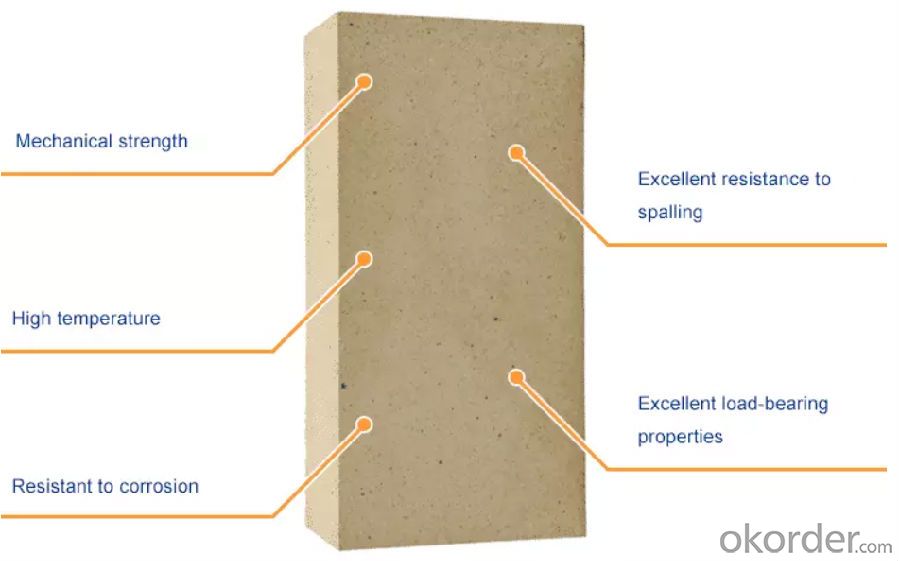
Features Of High Alumina Brick
Mechanical strength
High temperature
Excellent resistance to spalling
Resistant to corrosion
Excellent load-bearing properties
Applications Of High Alumina Brick
Nonferrous Metal Furnace
Rotary & Shaft Kiln
Various Incinerator
Reheating Furnace
Permanent Lining For EAF Ladle
General Industrial Furnace etc.
Specifications Of High Alumina Brick
High-alumina refractory birck
JUCOS Alumina contents range from 48% to 85%
Widely used throughout metallurgical industry
Physical And Chemical Indicators For High Alumina Brick
Brand Properties | SK-40 | SK-38 | SK-37 | SK-36 | SK-35 | |
Refractoriness (SK) | 40 | 38 | 37 | 36 | 35 | |
Apparent Porosity (%) | 22 | 23 | 23 | 23 | 23 | |
Bulk Density (g/cm3) | 2.65 | 2.40 | 2.35 | 2.30 | 2.25 | |
Cold Crushing Strength(MPa) | 70 | 52 | 50 | 45 | 40 | |
Thermal Linear Expansion(%) @1000deg | 0.6 | 0.6 | 0.6 | 0.6 | ||
Permanent Linear Change(%) @1400degx2hrs | ±0.2 | ±0.3 | ±0.3 | ±0.3 | ±0.3 | |
Refractoriness under Load (℃) @0.2MPa | 1,530 | 1,500 | 1,450 | 1,420 | 1,380 | |
Chemical Composition(%) | Al2O3 | 80 | 72 | 60 | 50 | 45 |
Fe2O3 | 1.8 | 2.0 | 2.0 | 2.0 | 2.0 | |
Pictures Of High Alumina Products
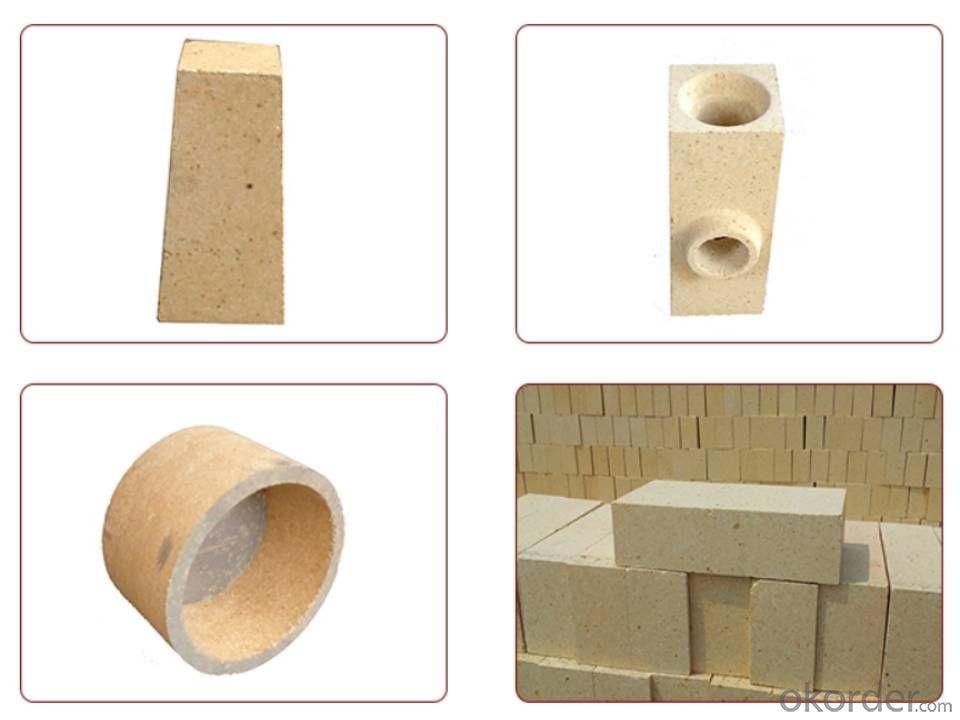
- Q: What is the price of the latest thermal insulation material?
- Also through online pre understand the products and prices, and now have large-scale manufacturers are generally opened on the cable business. Goods than three, manufacturers on-site inspection, confirm the quality of goods after considering cooperation.
- Q: What is the standard size of high alumina brick?
- The country has laid down a number of criteria for the use of refractory bricks to unify market demand.
- Q: What are the specific raw materials for plastic pallets?
- With excellent mechanical properties, its strength and elasticity are higher than HDPE, and it has good flexural fatigue resistance. It has good heat resistance and good chemical stability. Besides being concentrated by concentrated sulfuric acid and concentrated nitric acid, it is relatively stable to other chemical reagents. The high frequency insulation performance of polypropylene is excellent because of its almost no water absorption, so the insulation performance is not affected by temperature.
- Q: How are the high alumina bricks fired?
- Generally, the high alumina bauxite is added with a small amount of clay. After being ground, the gas is injected and shaped in the form of slurry by the way of gas attack or foam, and it is burnt at 1300~1500 DEG C. Sometimes industrial alumina can be used to replace part of bauxite clinker. Used for lining and thermal insulation of masonry kilns, as well as for areas where there is no high temperature, high melting material erosion and erosion effects. When touching the flame directly, the touch temperature shall not be higher than 1350 degrees.
- Q: What are the high temperature refractory mortars made of?
- Products used in metallurgy, building materials, machinery, chemical, power industry, industrial thermal furnace, for masonryBuilding clay brick, high alumina brick and corundum brick have the characteristics of full grey seam, good airtightness, high bonding strength, high temperature performance and suitable construction time
- Q: How to distinguish the good or bad of the high aluminum brick?
- The general high alumina bricks used in the steel, steelmaking, hot blast furnace, electric furnace, blast furnace, reverberatory furnace, rotary kiln lining of industrial furnace in China, mainly composed of a bauxite; sillimanite minerals (including kyanite, andalusite, sillimanite etc.); synthetic material, such as alumina synthesis of mullite, corundum, etc.. High aluminum brick has good quality, high refractoriness, long life and other characteristics, is the main use of refractory brick kiln products, commonly used units can not distinguish the quality and grade of high aluminum brick right in the procurement time, caused by the high prices to buy low grade products, thereby reducing the furnace life therefore, Zhengzhou's Sindh yuan refractory material factory in here is simple to introduce how to identify the quality when purchasing brick high alumina brick.Color: in the purchase of high alumina brick, first of all to see the color, high quality aluminum brick surface smooth, yellow color white, four sides smooth, no broken angle, no cracksWeight: the weight of a block of bricks to be called, according to the standard weight level, high aluminum brick weight of 4.5 kg. Two grade high alumina brick weighs 4.2 kg, three high aluminum brick weighs 3.9 kg, the same level, the same parameters can reach this standard can be regarded as high-quality high aluminum bricks, the opposite is not up to the weight that the quality is good, if there is a crack, four angle uneven, off angle phenomenon, then substandard products, some of the above points to help to the purchaser
- Q: How to test the aluminium bricks of high alumina refractory bricks?
- Forming high alumina brick will be tested on some professional equipment, it is suggested that you can go to the professional testing department to know about it!
- Q: What is the apparent porosity of high alumina brick?
- In the production of high alumina bricks in addition to the entity, there are many different sizes and shapes of different pores, pores can be divided into three categories: one side closed the other side and the outside world is called open pores, closed in the product not communicated with the outside is called closed pores, penetrating through pores called the few products.
- Q: How does the physicochemical index change when the high alumina brick is used at high temperature?
- If the range of softening temperature exceeds the load, the constants of other physical and chemical indexes will also increase or decrease.
- Q: High alumina brick 80 with which high aluminum cement?
- Which kind should be chosen should be determined according to the conditions of use, life expectancy and cost control. By the way, the quality of masonry is also very influential.
Send your message to us
High Alumina Brick - Curved Dense Line Fire Resistant for Blast Furnaces
- Loading Port:
- Tianjin
- Payment Terms:
- TT or LC
- Min Order Qty:
- 25 m.t.
- Supply Capability:
- 150000 m.t./month
OKorder Service Pledge
OKorder Financial Service
Similar products
Hot products
Hot Searches
